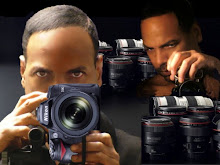
Like almost all early Jazz musicians, Louis was from New Orleans. He was from a very poor family and was sent to reform school when he was twelve after firing a gun in the air on New Year's Eve. At the school he learned to play cornet. After being released at age fourteen, he worked selling papers, unloading boats, and selling coal from a cart. He didn't own an instrument at this time, but continued to listen to bands at clubs. Joe "King" Oliver was his favorite and the older man acted as a father to Louis, even giving him his first real cornet, and instructing him on the instrument. By 1917 he played in an group at bars in New Orleans
In 1919 he left New Orleans for the first time to join a band in St. Louis. When the boats left from New Orleans Armstrong also played regular gigs in parades with brass bands. When King Oliver left the city in 1919 to go to Chicago, Louis took his place in from time to time. In 1922 Louis received a telegram from his mentor Joe Oliver, asking him to join his in Chicago. This was a dream come true for Armstrong and his amazing playing in the band soon made him a sensation among other musicians in Chicago. The New Orleans style of music took the town by storm and soon many other bands from down south made their way north to Chicago. While playing in Oliver's Creole Jazz Band, Armstrong met Lillian Hardin, a piano player and arranger for the band. In February of 1924 they were married. Lil was a very intelligent and ambitious woman who felt that Louis was wasting himself playing in Oliver's band. By the end of 1924 she pressured Armstrong to reluctantly leave his mentor's band and move to New York to play in Fletcher Henderson's Orchestra for 13 months. During that time he also did dozens of recording sessions with numerous Blues singers, including Bessie Smith's 1925 classic recording of "St. Louis Blues". He also recorded with the Red Onion Jazz Babies.
Click Here!












